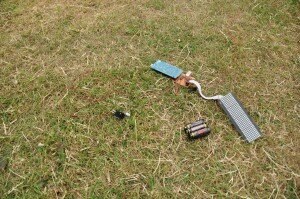With the NASA space budget cuts that have recently come to fruition people have decided to take matters into their own hands. Home DIY-ers rocket scientists are having an easy time with the help of Arduino. Yes the programmable unit that does everything under the sun is giving home enthusiast the ability to launch their own rockets. Speaking of homemade rocket scientists, a propeller head that goes by the name of ‘msraynsford’ has designed a rocket launch system using an Arduino unit. The unit was programmed to use a countdown and automatic ignition system and in the designers own words goes on to say, “Being an Arduino most of the code is already written in other projects, (that is after all why we use Arduinos isn’t it?). The program needs to read in the input from the micro switch to determine when the countdown should be running, it should only count down while the switch is depressed. When the countdown reaches zero the Arduino should trigger the relay should be activated. Both of these functions are standard IO type code using digitalRead and digitalWrite. The DotMatrix is driven by the “Matrix Display" Library. The display is initialized when the program starts and images displayed by turning single pixels on and off. I modified the Font.h file slightly to incorporate more of the ASCII characters so I have included my version of the Matrix display library in the source code attachment. If someone were to be really keen I would suggest moving the character mapping function into the header too and creating the rest of the ASCII characters for the display. It’s on my list of things to do along with a variable width font, but that list is already pretty large so this won’t be done for some time. The scrolling display displaying the NortHACKton URL is created using the drawstring functions provided as part of the library. The rocket and abort animations are defined as byte arrays at the top of the code and drawImage function simply calculates the visible part of the array and writes that data to the display.” It’s nice to see some outward direction involved with an Arduino unit. It would seem there is nothing this easily programmable unit can’t do.

